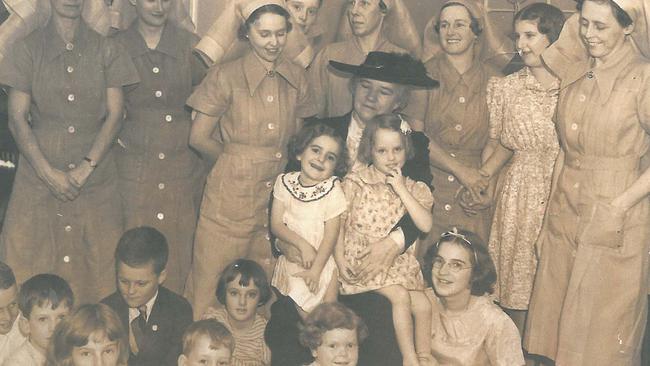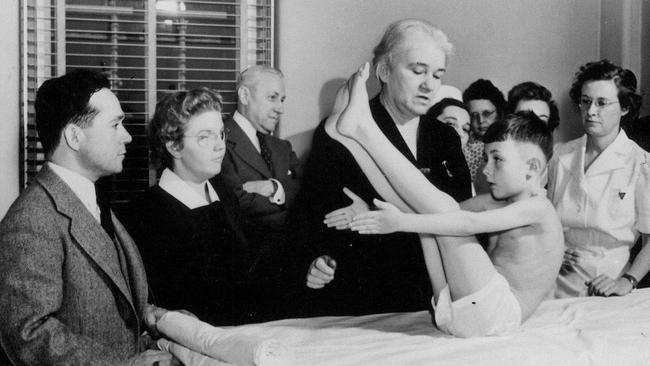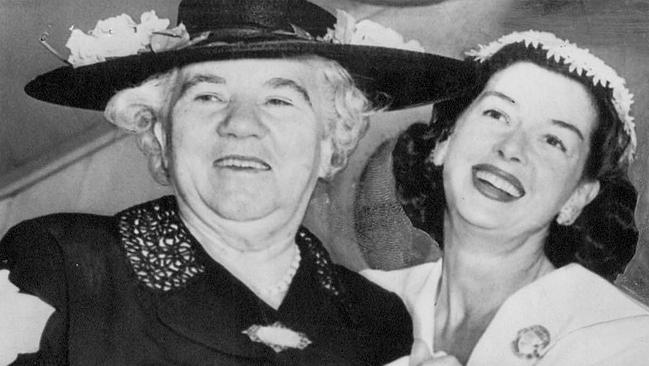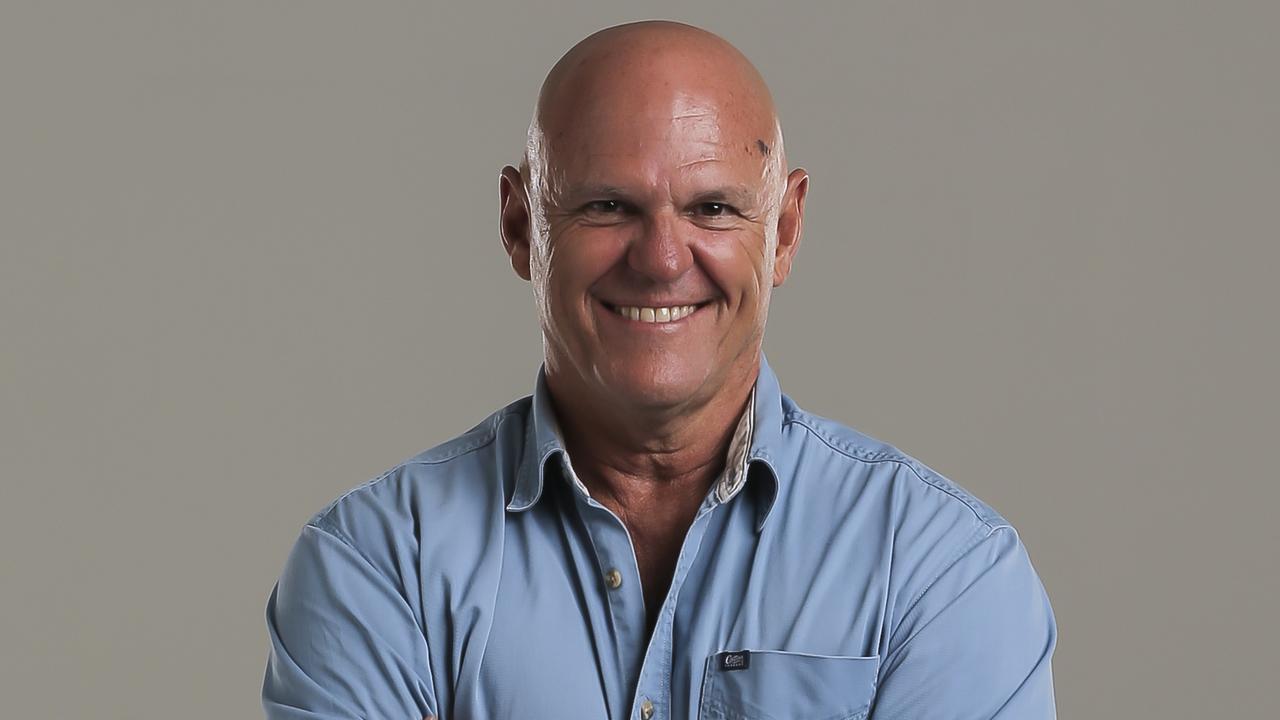Hollywood honours bush nurse Sister Elizabeth Kenny who made medical breakthrough for polio patients and pioneered physiotherapy
SISTER Elizabeth Kenny defied conventional medical wisdom with her techniques to treat polio and cerebral palsy and gave impetus to the science of physiotherapy.

Opinion
Don't miss out on the headlines from Opinion. Followed categories will be added to My News.
IT’S June 1942 and Australian forces have just waged war with the Japanese in the Battle of the Coral Sea.
Brutal campaigns are about to begin at Kokoda and Milne Bay.
The United States has entered the great global conflict and Hollywood is planning a biopic of the person it sees as Australia’s greatest hero.

It isn’t a fighting man though, but a woman who has waged war on the medical profession all her life, a big white-haired Queensland bush nurse named Sister Elizabeth Kenny.
Hollywood producer Paul Kohner has bought the rights to her biography, And they Shall Walk, but when he first calls on Sister Kenny she gruffly refuses even to see him.
Then when he finally meets her, she wants nothing to do with all that Hollywood guff. Finally, he convinces her that she can use the money to open more of her polio clinics.
Young Australian actor Shirley Ann Richards is being trialled for the part but Kohner says he needs more bankable star power to sell the movie.
When Rosalind Russell finally beats Barbara Stanwyck for the role, she promises to give her $150,000 salary (about $4 million today) to create a foundation to continue Sister Kenny’s work.
It is a bright spotlight for the unassuming 62-year-old Darling Downs nurse.
The Sunday Mail of July 26, 1942 reported that just two years earlier Queensland Health Minister (and future premier) Ned Hanlon went to the Kenny Clinic in Brisbane with a passenger ticket for her to visit the US.

“Later that week Sister Kenny left for America,’’ we reported, “to break down reserve which greeted her unorthodox infantile paralysis treatment. In Australia she had fought considerable opposition.’’
Kenny had no formal training in nursing but worked at a small maternity hospital in Guyra and then out of her father’s home at Nobby, near Toowoomba.
At 17 she broke her wrist falling from a horse and, while recovering at the surgery of Dr Aeneas McDonnell in Toowoomba, she began studying his anatomy books and talked to him about the way he used hot compresses to treat polio cases in rural Queensland.
She opened a small home hospital at nearby Clifton and then, during World War I, worked on troop ships returning wounded soldiers to Australia.
From her base on the Darling Downs she pioneered new methods and defied conventional medical wisdom with her techniques to treat polio and cerebral palsy by discarding braces and encouraging movement, giving impetus to the science of physiotherapy.

The medical establishment was aghast and for years she was routinely ridiculed as a quack and charlatan, even a criminal, but the medical superintendent at Brisbane General Hospital said her patients fared much better than those treated by orthodox methods.

With the backing of Ned Hanlon and six Brisbane doctors she demonstrated her methods at the renowned Mayo Clinic in Rochester, Minnesota, in 1942 and soon she was teaching doctors and physiotherapists from around the world.
She could do nothing to fight off Parkinson’s disease, though, and died in Toowoomba 10 years later.
Sister Kenny was buried beside her mother in the little bush cemetery at Nobby. She never married but her adopted daughter, Mary McCracken, continued her work at Kenny clinics around the world.
Seventy years ago this weekend, finishing touches were being made to the film of her life, as Australia’s Attorney-General, “Doc” Evatt, visiting the RKO Studios in Hollywood, declared that Rosalind Russell bore a striking resemblance to Queensland’s great hero.
Sister Kenny lived to see Russell nominated for an Academy Award for her portrayal and win the Golden Globe.
Email: grantlee.kieza@news.com.au
The paperback edition of Grantlee Kieza’s bestseller Monash will be released next month


